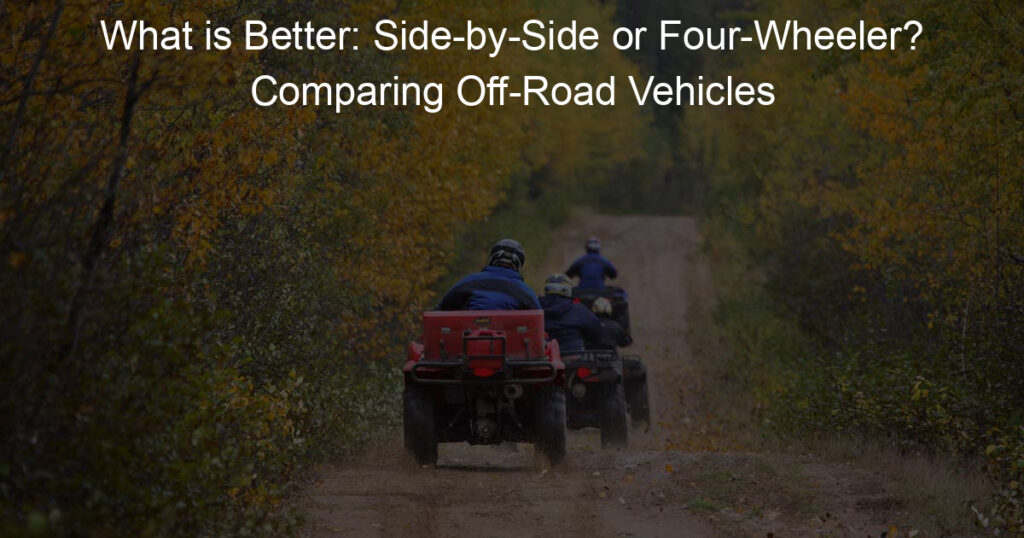When deciding between a side-by-side (UTV) or a four-wheeler (ATV), it’s essential to understand the key differences and benefits of each type of off-road vehicle.
Both ATVs and UTVs offer unique advantages depending on your intended uses, such as recreational riding, utility tasks, or sporting activities. So what is better, Side-by-Side or Four-Wheeler?
In order to determine which vehicle is better suited for your needs, let’s take a closer look at the features and capabilities of both side-by-side and four-wheeler vehicles.
Side-by-side vehicles, or UTVs, are characterized by their car-like controls, larger payload capacity, and multiple seating options. These vehicles are well-suited for those looking to transport passengers or carry loads of supplies and tools.
In contrast, four-wheeler ATVs are often smaller, more agile, and customizable with various attachments. They usually have a lower cost and are easier to store, making them a popular choice for solo riders or those seeking versatility in different terrains.
While both side-by-side and four-wheelers offer unique benefits, it’s essential to carefully consider the specific requirements of your lifestyle and the activities you plan to undertake before making a decision.
By examining the features and capabilities of each vehicle, you can determine which off-road option best meets your needs.
Key Takeaways
- Side-by-side vehicles offer more passenger space and payload capacity
- Four-wheelers are agile and versatile, suitable for solo riders or diverse terrains
- Carefully considering activity requirements will help determine the best choice for you
What is Better: Side-by-Side or Four-Wheeler
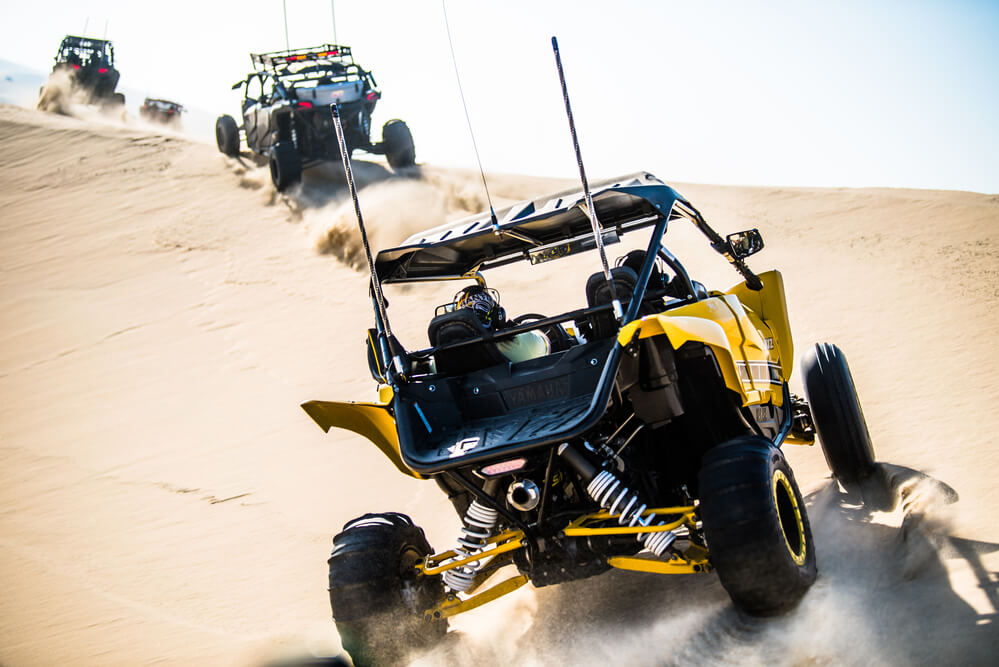
Design and Structure
Side-by-side vehicles, also known as UTVs (utility task vehicles), typically feature a unique side-by-side bucket seat set-up with a steering wheel and foot-pedal driving system.
This design allows for comfortable seating for two or more passengers, including the driver. They often come equipped with a roll bar or cage, providing an enclosed appearance and added safety.
Performance
When it comes to performance, side-by-side vehicles often have robust engines, allowing them to carry more weight and tow heavy loads. They usually come with four-wheel drive or all-wheel drive (AWD) capabilities to handle various off-road conditions.
Additionally, side-by-sides often have larger fuel tanks compared to ATVs, providing longer riding ranges.
Terrain Suitability
As for terrain suitability, side-by-side vehicles can handle a wide range of terrains, including mud, sand, rocks, and snow. Due to their larger size and weight, they provide more stability on uneven surfaces compared to ATVs.
Nonetheless, keep in mind that their wider footprint may make it challenging to navigate through narrow off-road trails.
Recreational Use
Side-by-side vehicles are ideal for recreational use, especially when you want to share the off-roading experience with friends or family. These vehicles often come with more storage space and additional features compared to four-wheelers, like a cab enclosure, heating, and even music systems.
Some UTVs are also designed for specific recreational purposes, such as hunting, camping, or off-road racing. Remember, when choosing between a side-by-side and a four-wheeler, it is essential to consider your needs and preferences.
Ultimately, your decision should be based on the vehicle’s intended use, performance, and suitability for the terrain you plan to explore.
Understanding Four-Wheelers
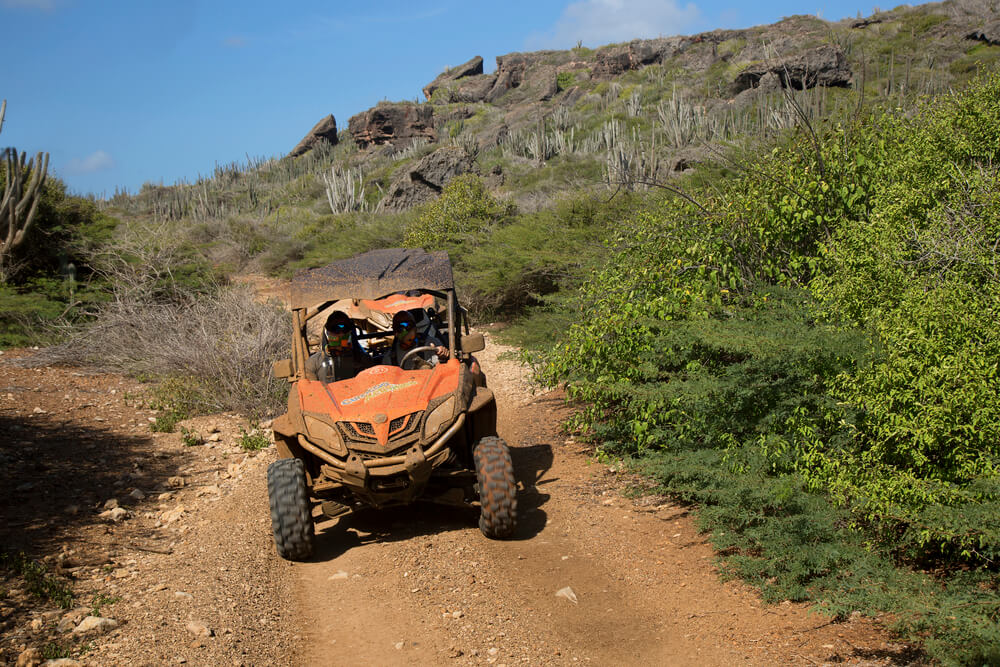
Design and Structure
Four-wheelers, also known as All-Terrain Vehicles (ATVs), are compact vehicles designed for off-road use. They typically have a straddle seating position, handlebars for steering, and foot pads for the rider’s feet.
Some models may have a second seat for an additional passenger. The design of ATVs makes them agile and easy to maneuver, allowing you to access more challenging terrains.
Performance
When it comes to performance, ATVs generally have strong acceleration and a lower center of gravity, allowing you to tackle sharp turns and rough surfaces with confidence. T
hey are usually equipped with powerful engines and a suspension system that provides a smooth and enjoyable ride, even on bumpy terrain. With their lightweight design and responsive handling, four-wheelers are perfect for those seeking an adrenaline-pumping experience.
Terrain Adaptability
Four-wheelers are designed to handle various types of terrains, such as mud, sand, snow, and rocky surfaces. The combination of their robust suspension system, durable tires, and powerful engine helps you conquer challenging terrains with ease.
Their compact size and agile handling contribute to their terrain adaptability, which is crucial for off-roading enthusiasts exploring new paths and trails.
Utility and Work Applications
Although ATVs are primarily known for their recreational purposes, they can also serve as effective utility vehicles for work applications. With their towing and hauling capabilities, four-wheelers can help you transport equipment, materials, and even livestock on a smaller scale.
Further, their all-terrain capabilities make them suitable for use on construction sites, agricultural fields, and in search of rescue operations. Keep in mind, however, that ATVs are generally limited in terms of payload and may not be the best choice for heavy-duty work.
Comparing Side-by-Side and Four-Wheeler Vehicles
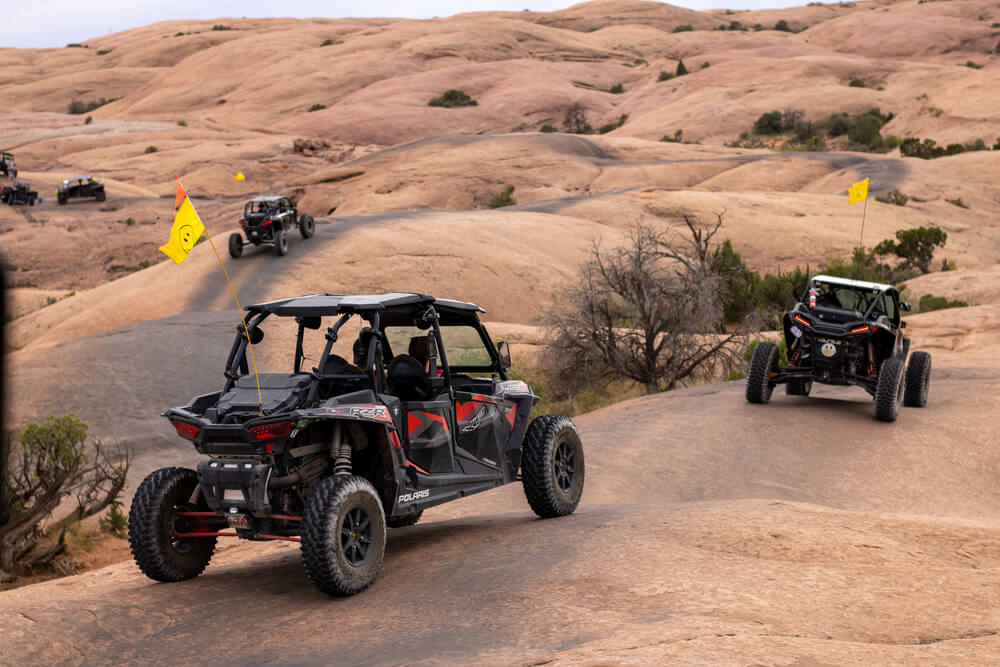
Safety Features
Side-by-side vehicles (SxS) or Utility Task Vehicles (UTVs) often come with built-in safety features that are similar to cars, like roll bars or cages and wind protection. This provides you and your passengers with a higher level of protection in case of an accident.
In contrast, All-Terrain Vehicles (ATVs) have fewer built-in safety features, and the rider relies more on their protective gear and their ability to handle the vehicle.
Comfort and Convenience
When it comes to comfort, a side-by-side generally offers more convenience for the occupants, as they have side-by-side bucket seats and a steering-wheel and foot-pedal driving system, similar to a car.
UTVs usually have more storage space and seating capacity, making them ideal for carrying passengers and cargo.
On the other hand, an ATV has a more traditional saddle seating arrangement, where the rider sits on the vehicle and controls it with handlebars. This setup might be less comfortable for longer rides, especially for those not accustomed to the saddle-like seating position.
Maintenance and Durability
Both ATVs and UTVs require regular maintenance, including oil changes, air filter cleaning, tire pressure checks, and more. However, ATVs generally have fewer moving parts than UTVs, which can simplify maintenance and keep costs down.
ATVs are also known to be more maneuverable on difficult off-road trails due to their compact size and tighter turning radius.
UTVs, on the other hand, often come with more advanced suspension systems and larger engines, which may require more frequent maintenance and higher costs. Yet, their sturdier and more stable design can make them better suited for heavy-duty work and rough terrain.
Price Considerations
When considering the cost of a side-by-side or a four-wheeler, you should look at both the initial purchase price and the ongoing costs of ownership. UTVs tend to be more expensive than ATVs due to their larger size, roll cage protection, and other features.
Regardless, they could offer more value if you require a vehicle with greater capabilities and seating capacity.
ATVs usually have a lower initial price point, but you should still consider the cost of necessary accessories and protective gear, as well as regular maintenance. Ultimately, the choice between a side-by-side and a four-wheeler depends on your specific needs, preferences, and budget.
Conclusion
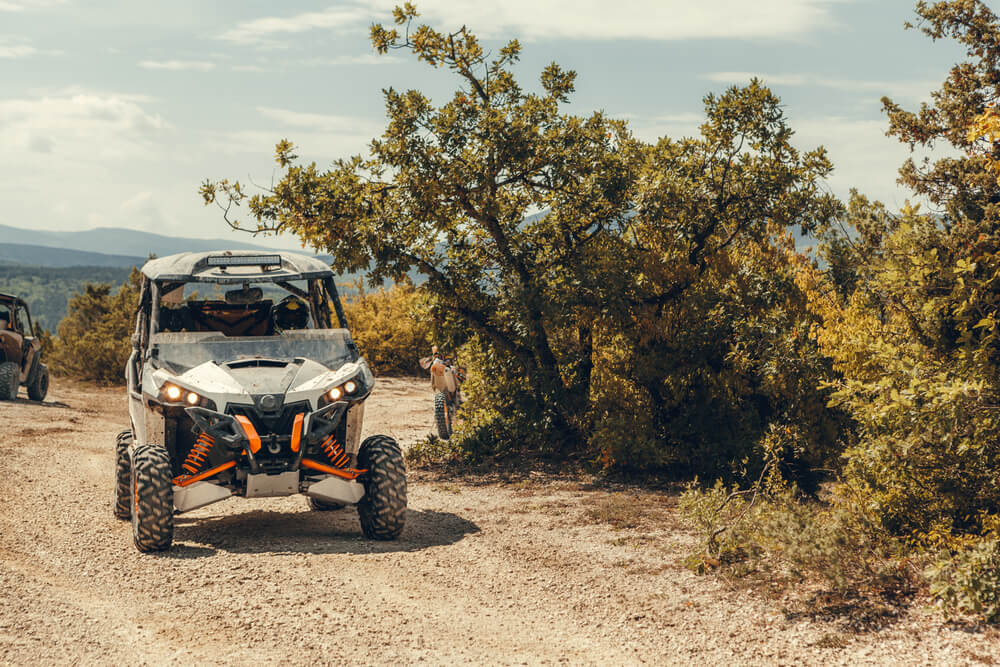
As a rider, choosing between a side-by-side or a four-wheeler depends on your preferences and intended use. If you enjoy riding solo and tackling tight, difficult off-road trails, a four-wheeler (or ATV) might suit you best. ATVs are highly maneuverable and able to handle varied terrains.
On the other hand, side-by-sides (or UTVs) are great for riding with passengers, offering more comfort and cargo space. Their bench or bucket seating accommodates multiple riders, making them excellent for family outings or group adventures.
Ultimately, the choice between a side-by-side or a four-wheeler is subjective. It is essential to assess your personal needs, riding style, and the environment in which you will be using the vehicle.
We hope we answered the question of what is better: Side-by-Side or Four-Wheeler. Considering these factors will help you make the right decision and ensure an enjoyable off-road experience.
Frequently Asked Questions
ATV or UTV: Which is better for off-roading?
Both ATVs and UTVs have their advantages for off-roading. ATVs are smaller, lighter, and more agile, making them easier to maneuver through tight spaces and over various terrains.
On the other hand, UTVs typically provide more stability and can carry more passengers, making them a better choice if you’re planning a group adventure. The best choice for you will depend on your specific needs and preferences when off-roading.
How do safety features compare between ATVs and UTVs?
UTVs tend to offer more safety features compared to ATVs. This is due to their larger size, car-like controls, and more seating options, which allow for the installation of safety features like seatbelts, roll cages, and side doors.
ATVs, being smaller and featuring a straddle seating position, typically do not offer these safety features. It’s essential to always follow safety guidelines and wear appropriate safety gear when operating either type of vehicle.
What are the main differences between ATVs and UTVs?
ATVs, or All-Terrain Vehicles, are smaller, lighter, and usually designed for a single rider. UTVs, or Utility Terrain Vehicles, are larger, heavier, and can accommodate multiple passengers. ATVs are controlled by handlebars, while UTVs have a steering wheel and car-like controls.
UTVs often feature more storage space and better safety features compared to ATVs.
Which is more suitable for farm work: ATV or UTV?
For farm work, UTVs are generally more practical due to their larger size, higher load capacity, and ability to tow trailers. They also provide safer and more comfortable seating for passengers.
ATVs can still be used for smaller tasks and lighter loads but may not be as efficient or effective when it comes to larger agricultural tasks.
How do ATVs and UTVs compare in terms of handling and stability?
ATVs offer better handling and maneuverability due to their smaller size and lighter weight. This makes them ideal for navigating tight spaces and challenging terrain.
Nevertheless, UTVs provide superior stability, especially on uneven ground or during turns, largely due to their wider wheelbase and low center of gravity. This can make UTVs more suitable for off-roading with multiple passengers or while carrying heavy loads.
What are the pros and cons of owning an ATV vs a UTV?
ATVs tend to be more affordable, easier to transport, and offer better maneuverability both on and off the trails. However, they typically lack storage space, seating capacity, and safety features compared to UTVs.
UTVs, on the other hand, provide more storage and seating options, greater stability, and enhanced safety features. They are better suited for tasks involving larger loads and multiple passengers, like group off-roading adventures or farm work.
Nonetheless, UTVs are generally more expensive and may be more challenging to transport due to their size and weight.

